If you squint, the Daimler SP250 looks like some cousin of the 1958 Packard Hawk. With eyes wide open, a catfish (some would say an angry catfish, but they’ve always seemed like level-headed fish to me). The little Daimler is neither of those things, of course. Rather, it’s something else entirely: A chromed, finned, fibreglass-bodied, V8–powered, British-built roadster conceived exclusively to capture American hearts. And while it didn’t exactly achieve that last bit, it was all of the rest and more.
Daimler’s sports car made its debut at the 1959 New York auto show. Up to that point, Daimler was known as a builder of staid, stately, sometimes stodgy saloons. The radical little roadster was quite a departure, then, and it drew mixed reviews. Chrysler hated it because the Daimler’s original name, Dart, conflicted with its own new trademarked offering from Dodge. As a result, the Daimler Dart’s name quickly changed to SP250. And sports car enthusiasts weren’t entirely sure what to make of its eccentric lines: the low wide grille, the swooping fender lines, the sharp fins at the back.

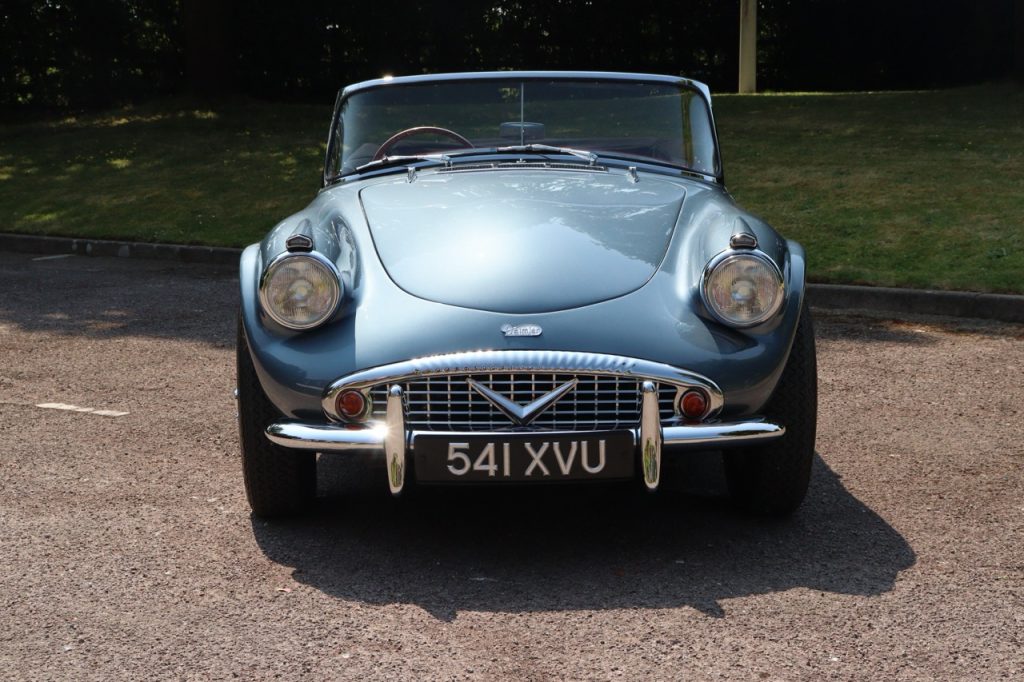
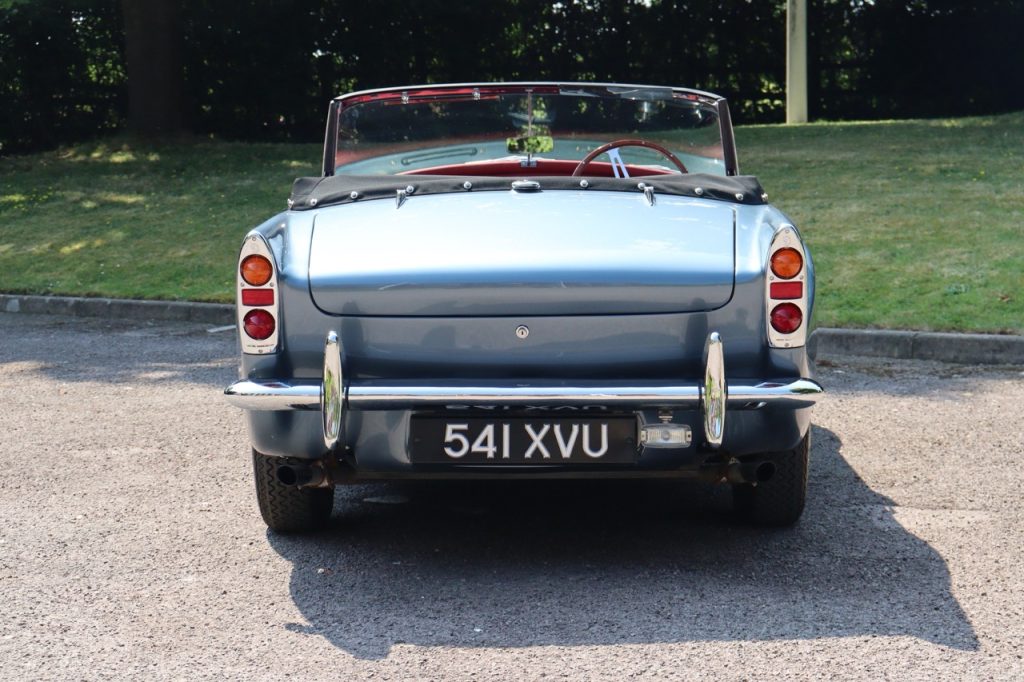
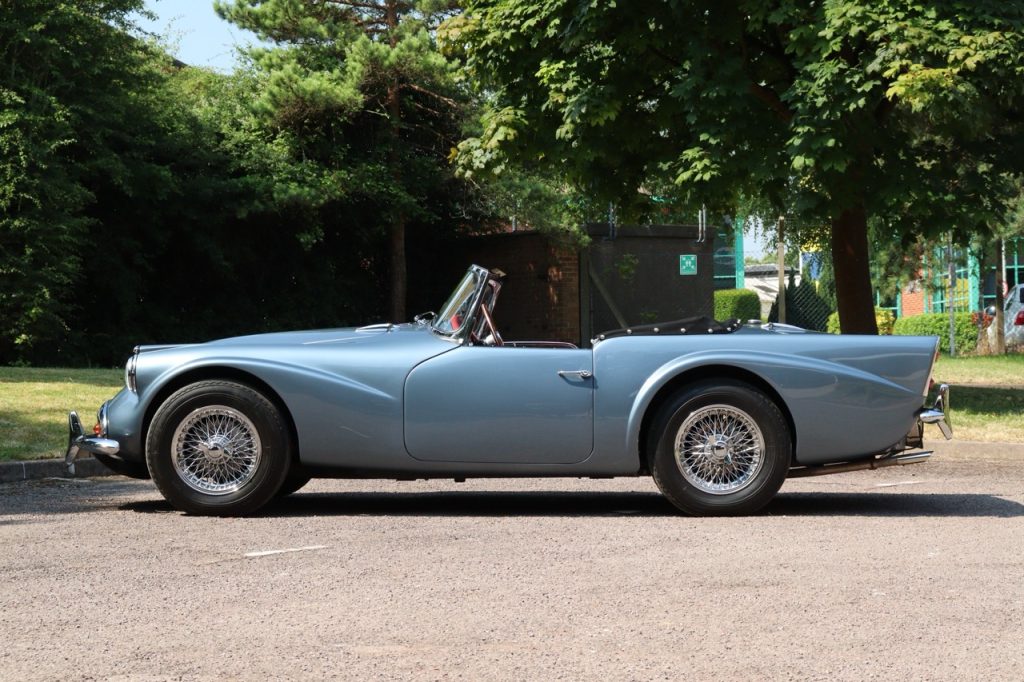
Ever hopeful, Daimler – then under the umbrella of the Birmingham Small Arms Company (BSA) – originally planned to sell 1500 in the first year, then 6000 over the next two years. The car’s looks, however, proved far too polarising, and by the end of production in 1964, just 2656 of the £1400 roadsters had been built.
Jaguar then purchased Daimler from BSA in 1960, its primary interest in expanding production capacity, but the SP250’s V8 proved an added bonus, and it would appear in various saloons until 1969.
And it was a gem of an engine. Designed by Daimler executive and engineer Edward Turner, who made his name in motorcycles first with Ariel and then most famously with Triumph, the OHV 2.5-litre V8 featured an iron block, alloy heads, and hemispherical combustion chambers. In the Daimler, fed by twin SU carburetors, it produced 140bhp and 155lb ft of torque, which propelled the 2100-pound roadster to 60mph in just under 9 seconds and on to a top speed nearing 125mph. The sound, by those with seat time, is generally described as “glorious.”
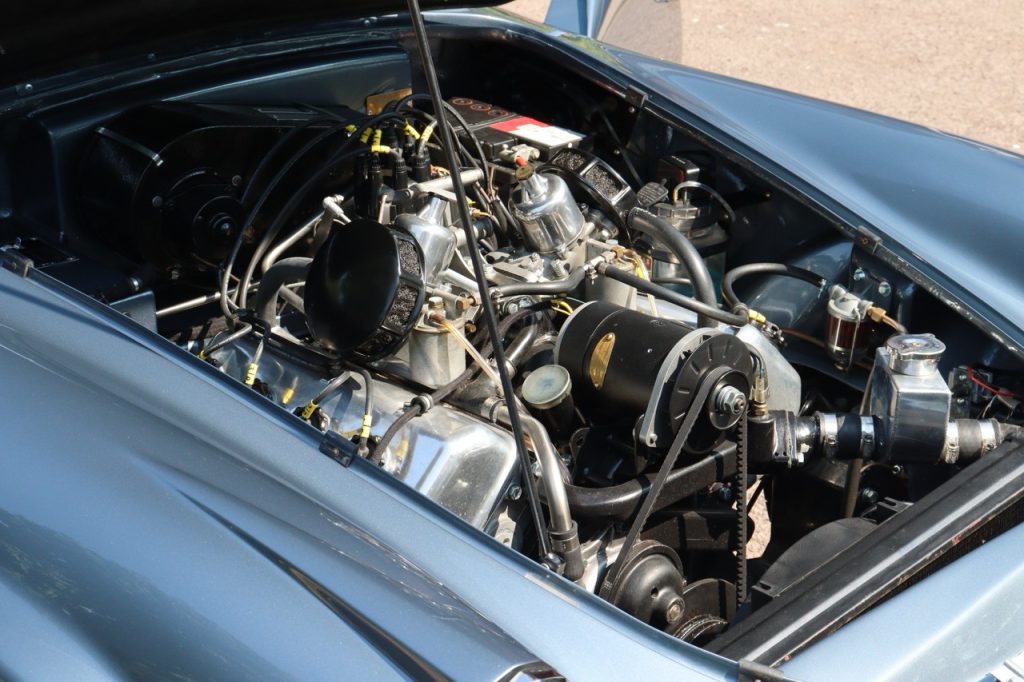
Power went to the rear wheels via a four-speed manual or optional automatic transmission. Independent double wishbones up front and a live axle with semi-elliptical springs in the rear kept the car planted, and four-wheel disc brakes were standard. The fibreglass body fit on top of a ladder chassis with 50 bolts, and that chassis improved over time; the earliest cars proved a bit noodly and are considered “A-spec,” while “B-spec” cars built under Jaguar ownership introduced extra outriggers and more support under the A-pillars for a more sure-footed ride. “C-spec” SP250s arrived in 1963 with standard convenience equipment including a cigarette lighter and a heater/defogger.
Curiously, 26 Daimler SP250s, all equipped with automatics, were enlisted by London’s Metropolitan Police to help thwart speeders, particularly bikers of the Ace Café sort. They were good at it, too, and other jurisdictions around the country soon adopted SP250s into their own ranks.
This week, in the lovely Pavilion Gardens in Buxton, Derbyshire, auction house H&H sold this rare automatic-equipped 1961 Daimler SP250, chassis no. 103755, for £39,375.
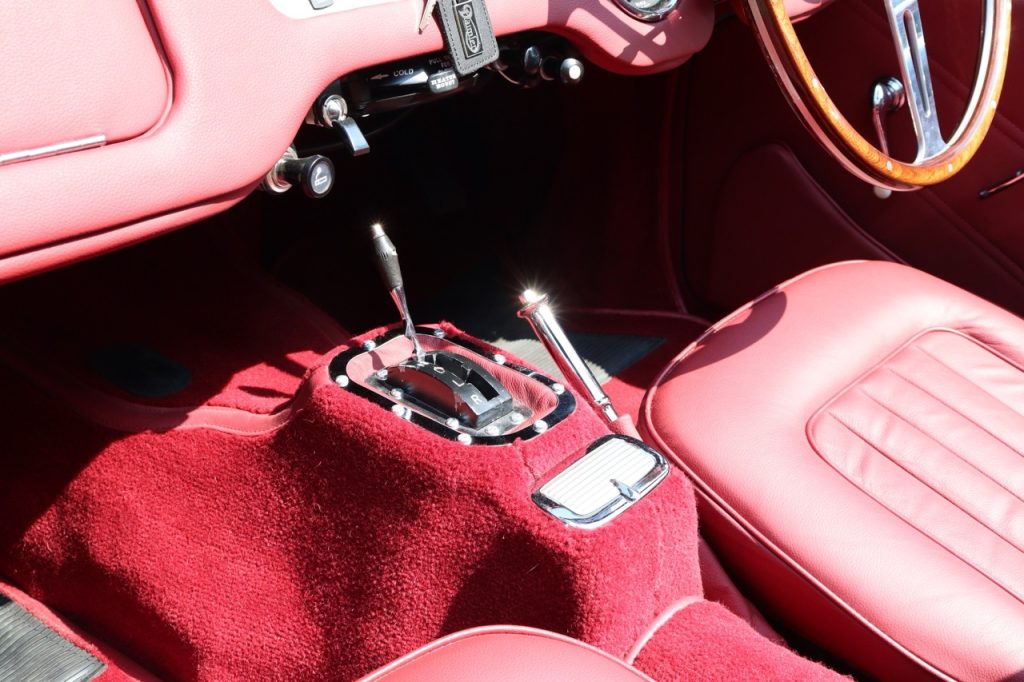
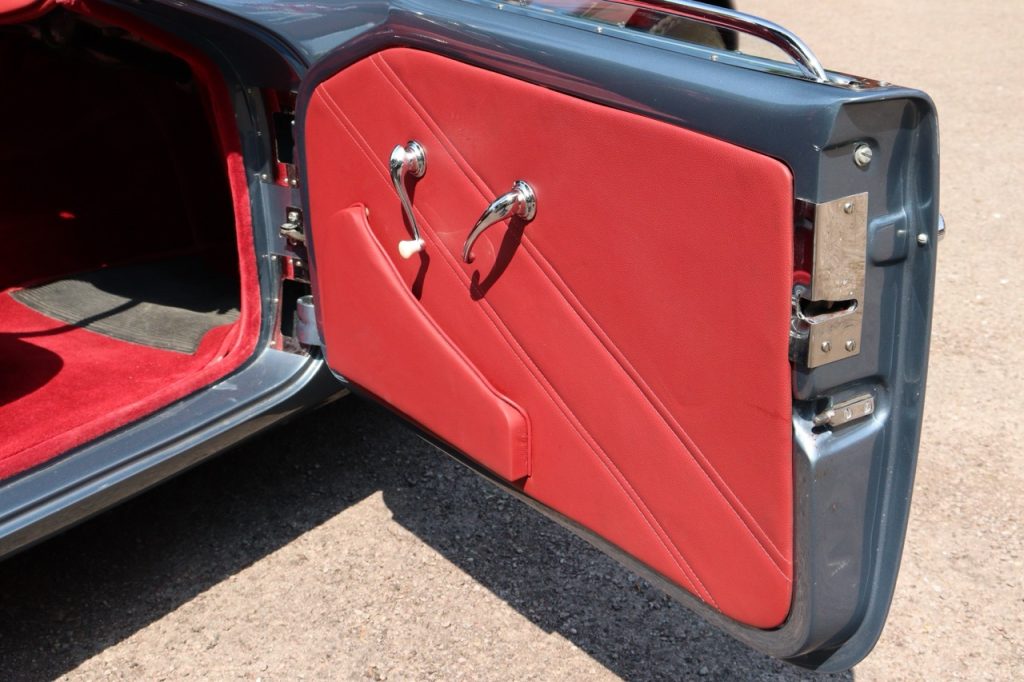
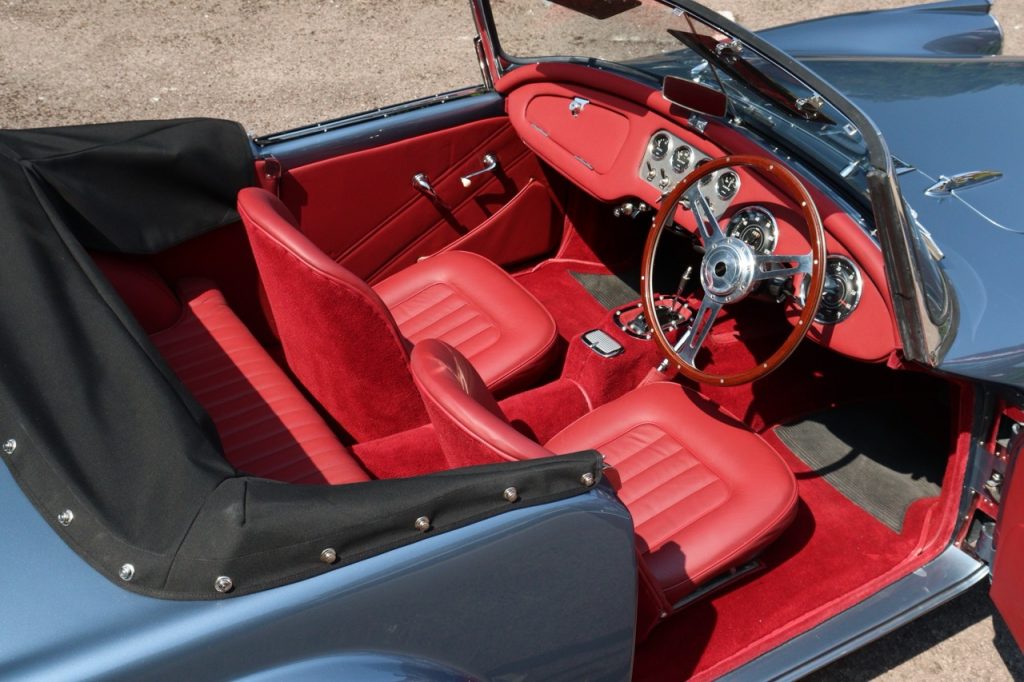
From 2016 to 2022, the car underwent an extensive refurbishment with marque specialist Robert Grinter Restorations, with £30,000 in receipts showing work done to the chassis, body, suspension, brakes, electrical system, drivetrain, brightwork, and steering, which included an upgrade from cam-and-lever to rack-and-pinion. The interior was retrimmed in St. James Red leather, with new Wilton carpets installed and a new mohair top fitted. The fibreglass is finished in the original Mountain Blue.
The photos accompanying the listing show a Daimler in exceptional fettle – outside, inside, and underneath. Not perfect, but close enough for colour TV, as they say, and the sale price reflected that. According to the Daimler Owners’ Club, only 1763 SP250s remain, and this one, with so much extensive work performed by the SP250 guy, should be considered one of the best – and a bit of a bargain at this price. People have certainly paid far more for far less.
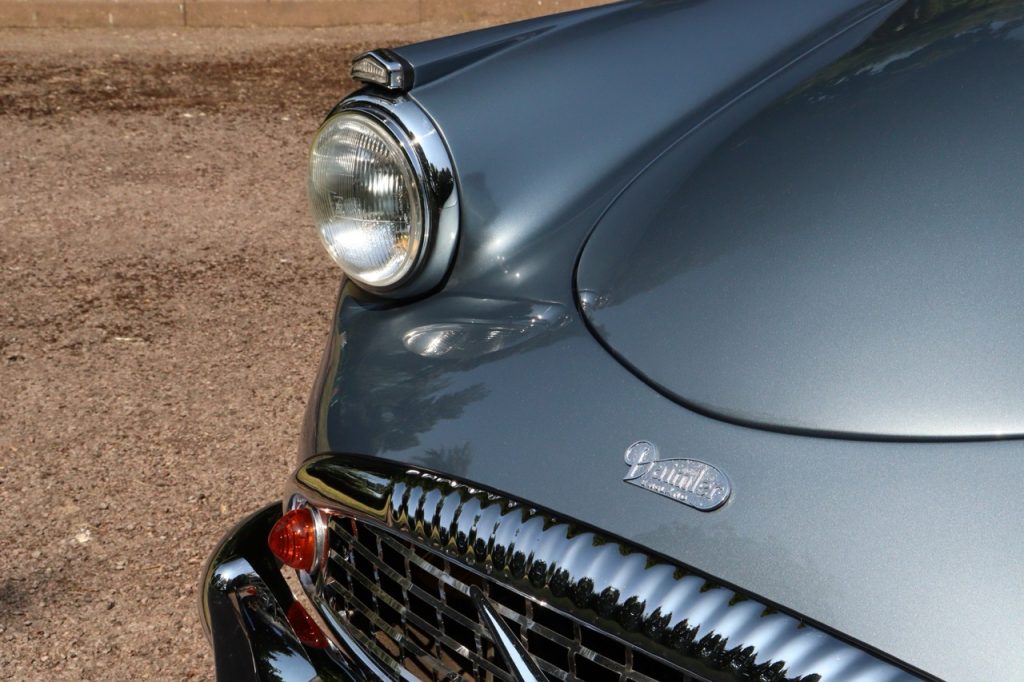
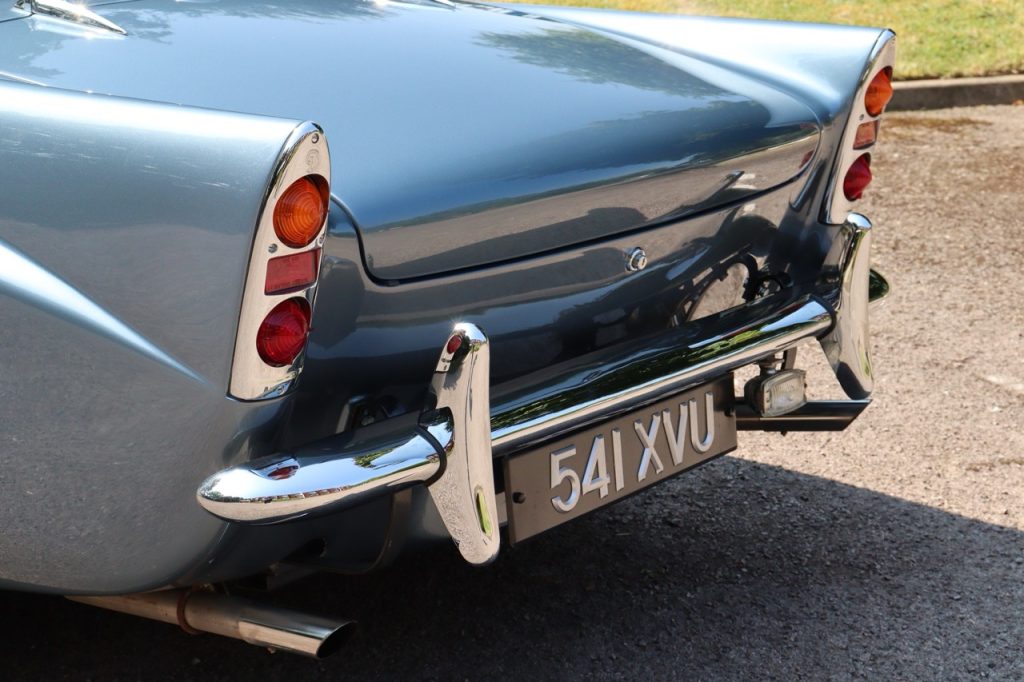
What’s that old saying: A face only a mother could love? It definitely takes a special sort to love the face of the Daimler SP250. That they have an enthusiastic following with an active owners group and good parts availability tells us the special sorts are out there, however. And anyway, looks-schmooks. Because once you slide into the driver’s seat, turn the key to hear that glorious V8 growl, and get underway, it doesn’t really matter what the car looks like – only that you enjoy the experience.
This Daimler SP250 had much going for it, was bought for correct, even smart, money, and now needs nothing . . . except an owner who will get in and enjoy the experience. And now it has that, too.
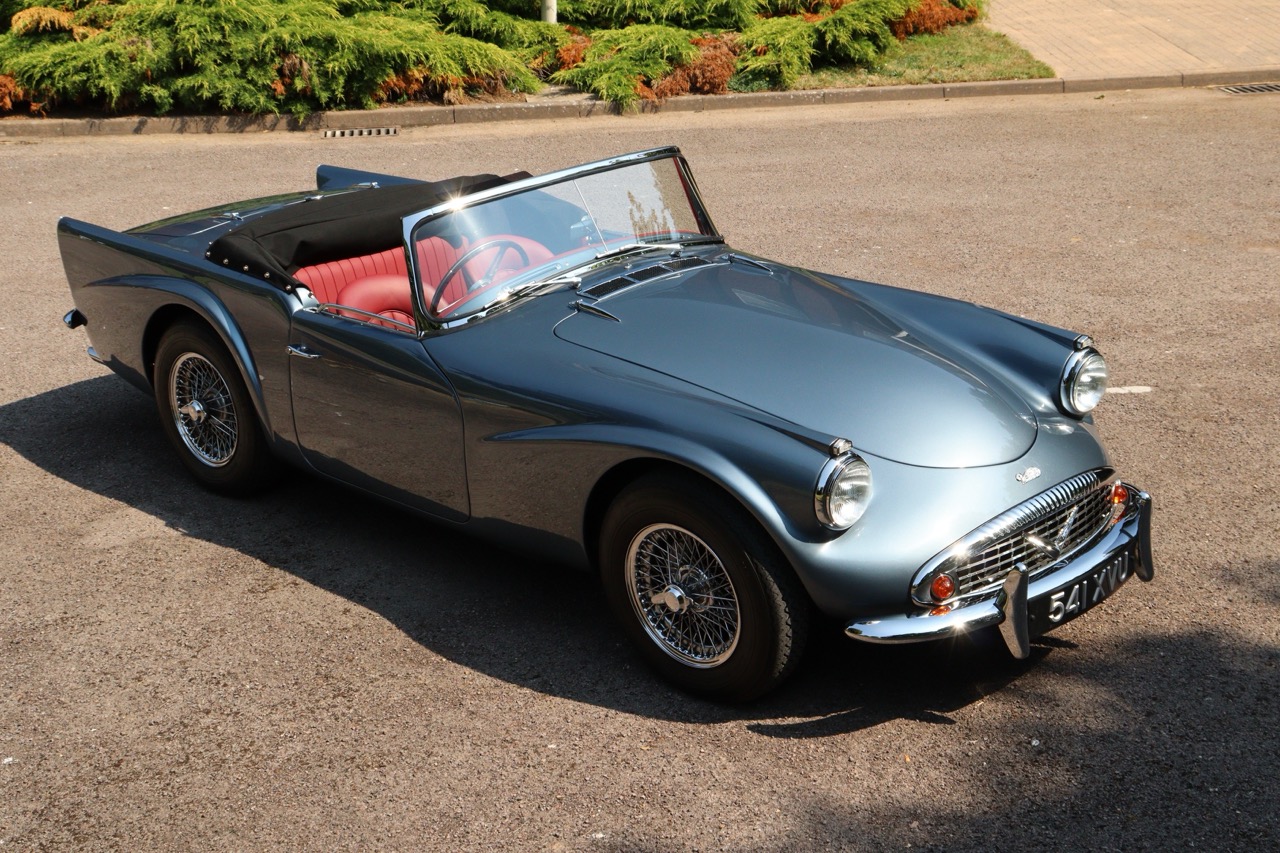

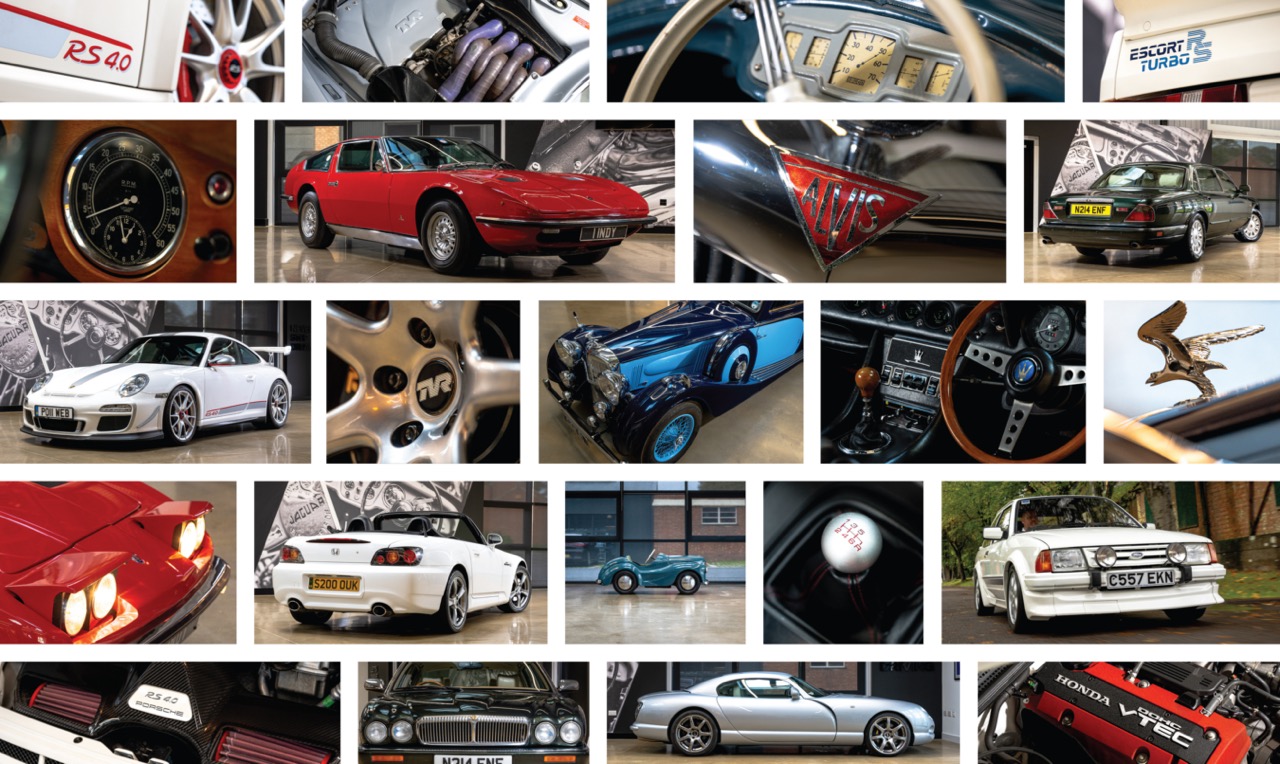







Just beautiful.
I owned a 1964 SP250 from 1970 to 1976. It was the most fun car I’ve ever owned. You’re right about the sound…it still lives on in my memory. The handling with standard cross ply tyres was awful; you could almost feel the tyres rolling off the rims in corners. However, with wider wheels and Dunlop SP Sport tyres the handling was transformed.
I’d have another one today if only a) I could afford the purchase price and b) I had somewhere to work on it.